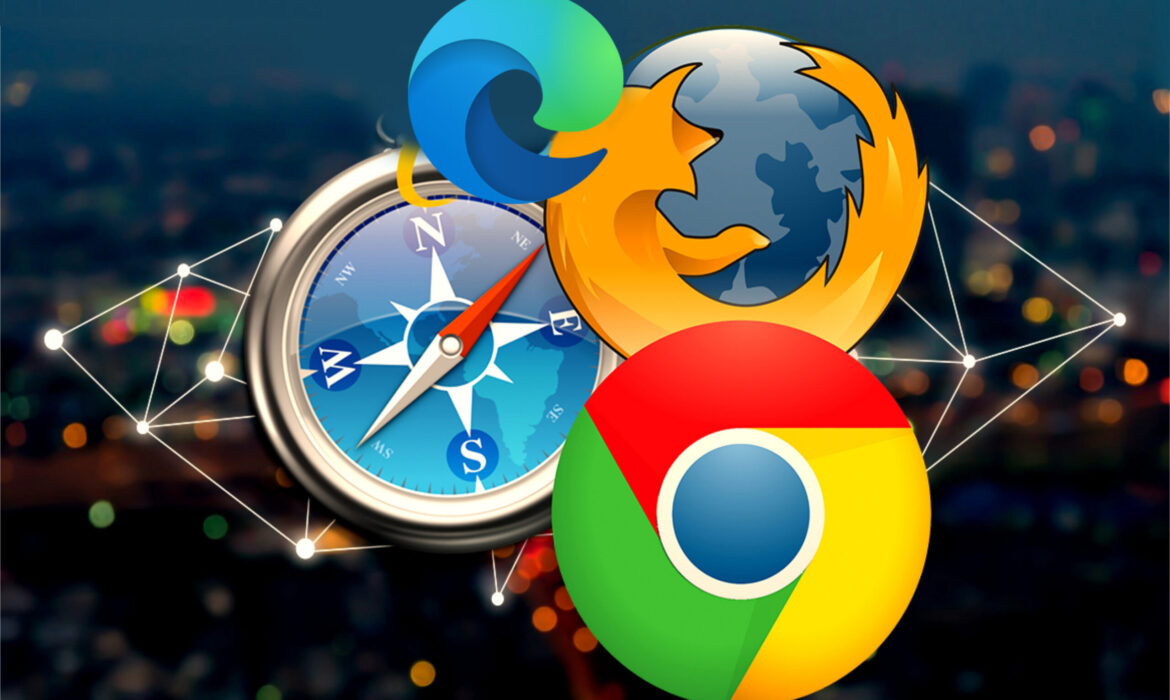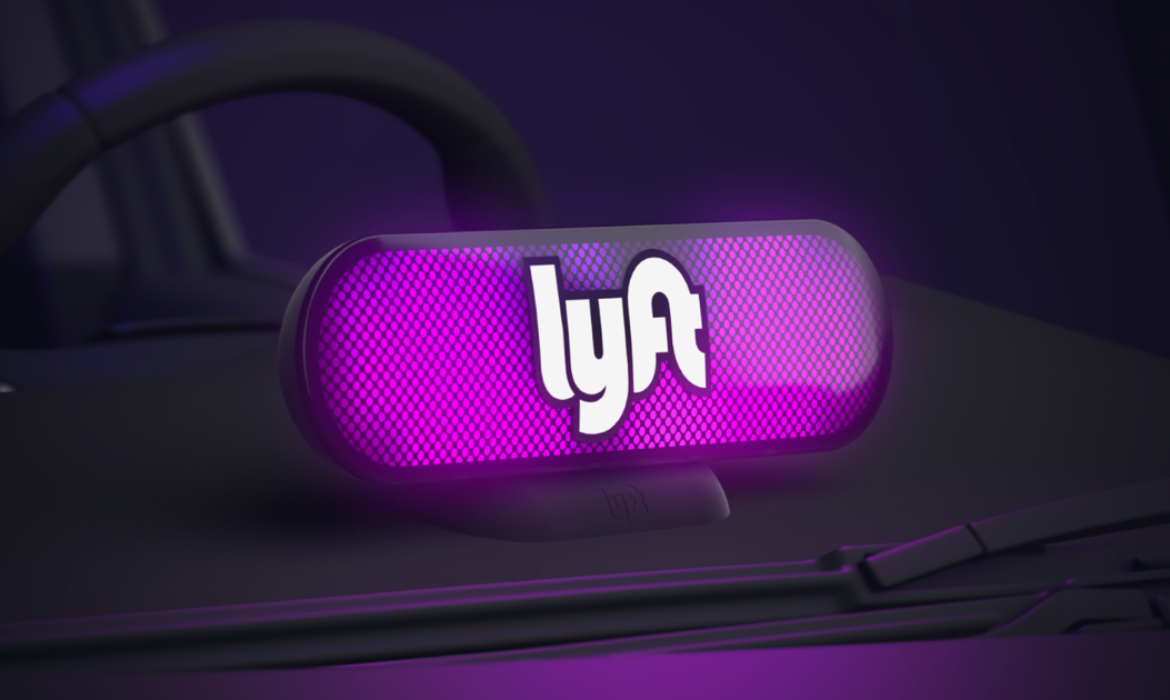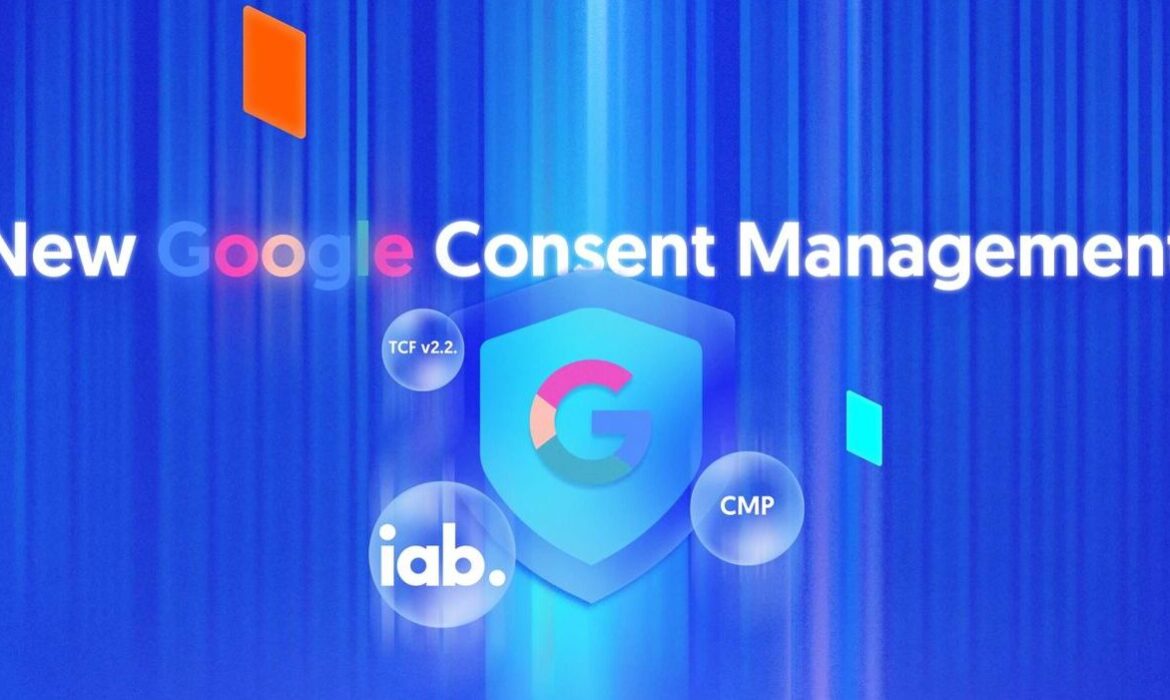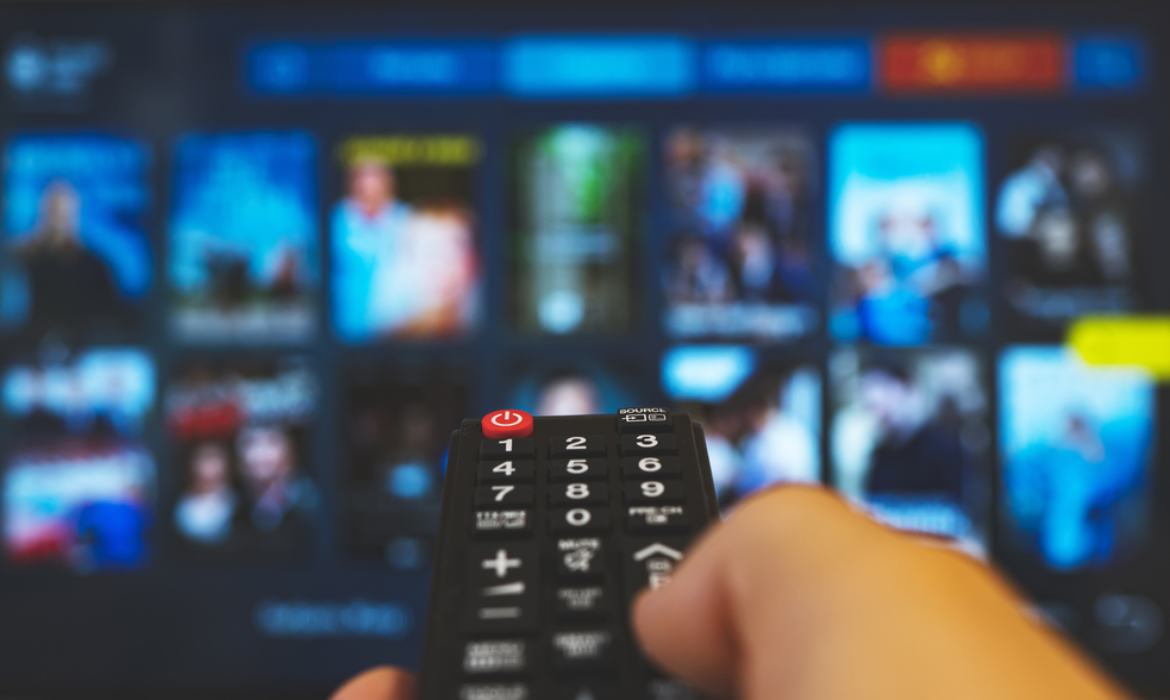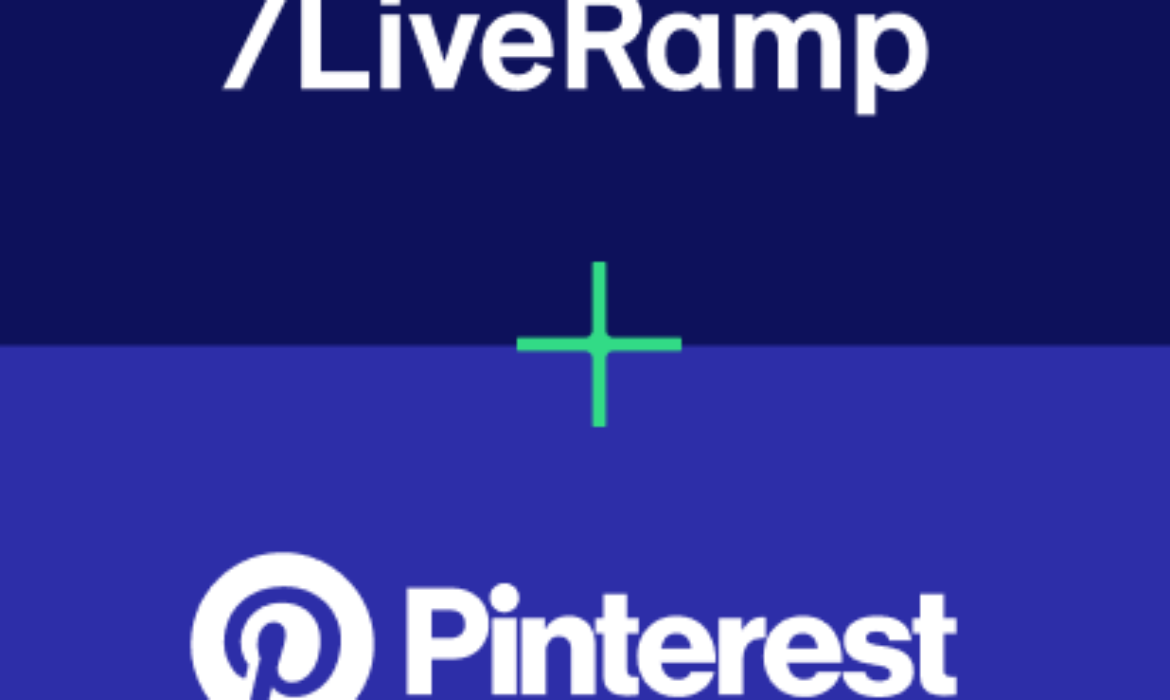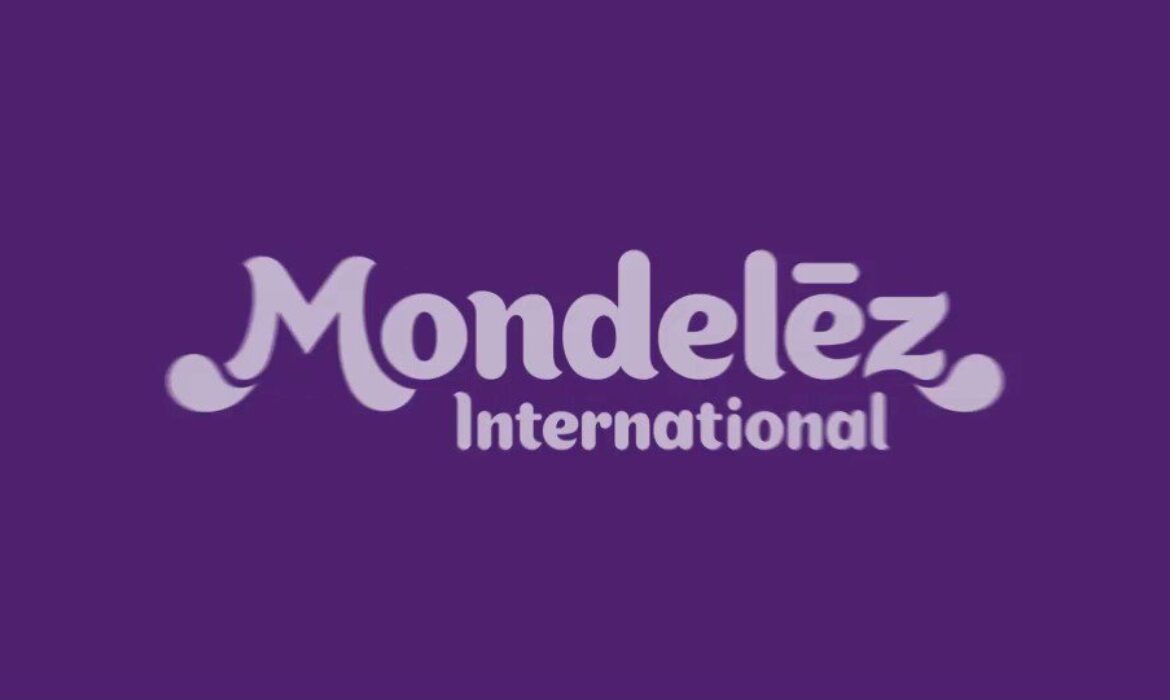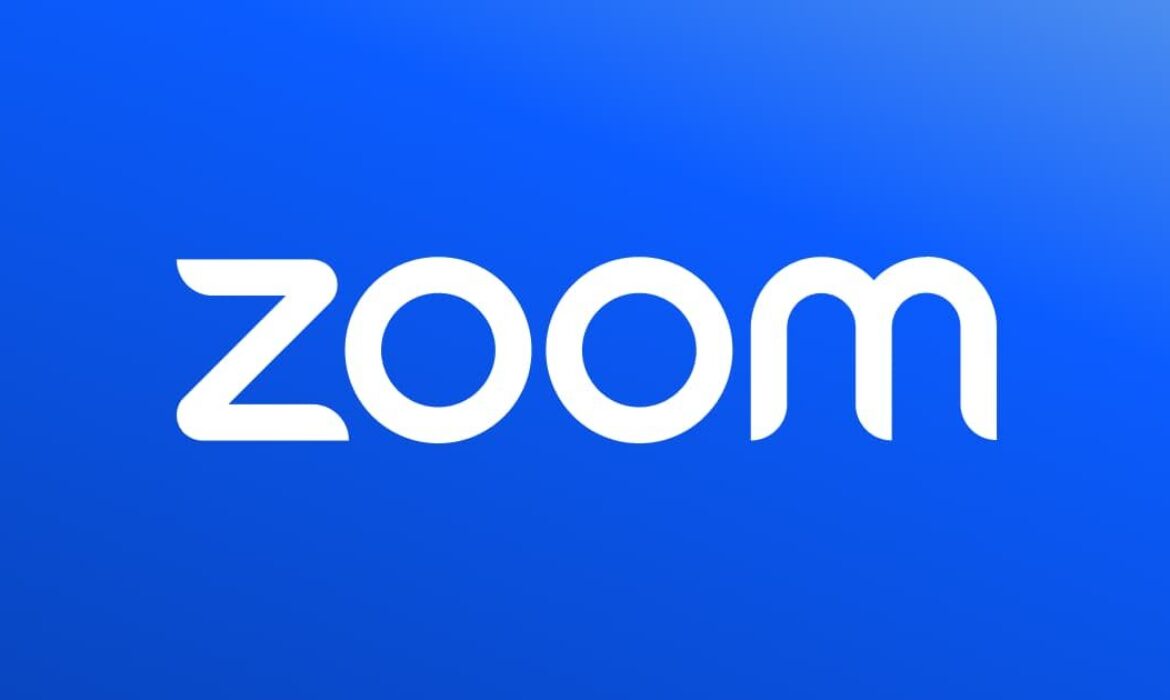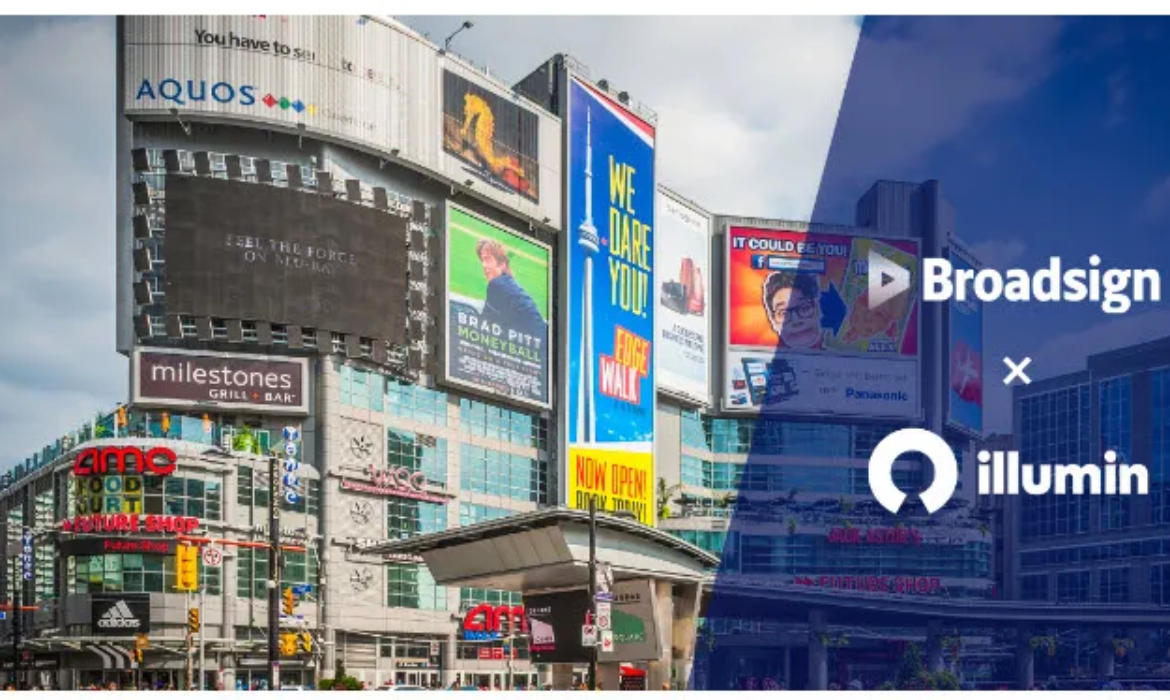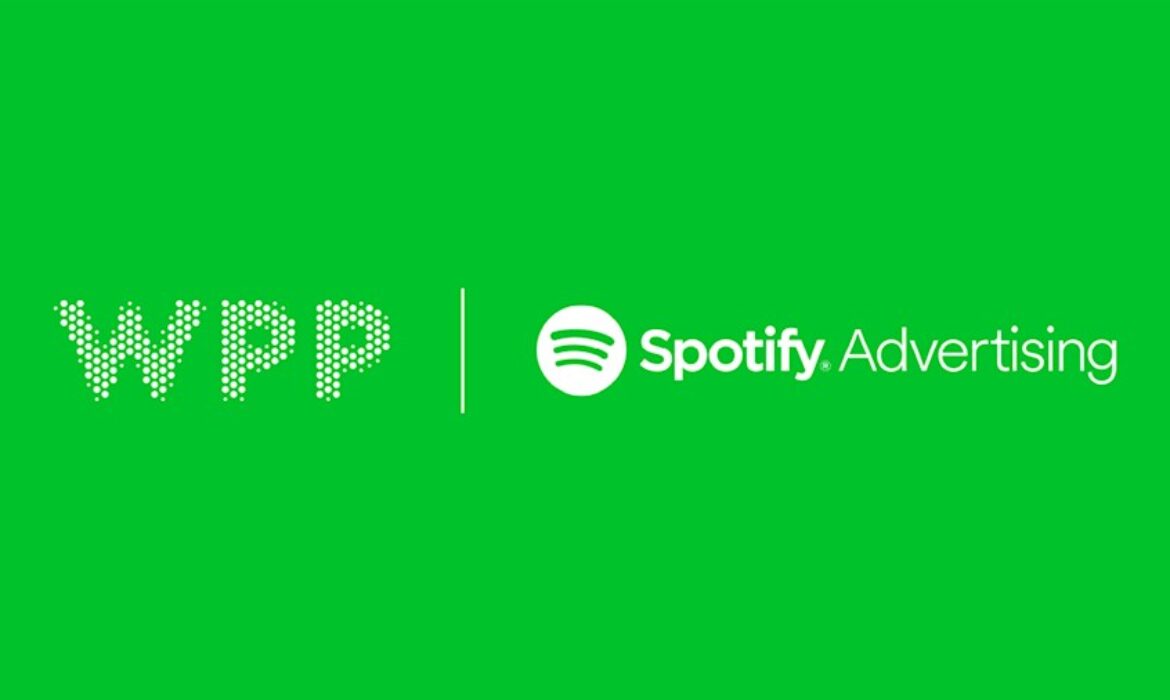India Launches IWBDC In a Drive For “Aatmanirbhar Bharat”
The Ministry of Electronics and Information Technology (MEITY) has announced the launch of the Indian Web Browser Development Challenge (IWBDC) in its stride towards “Aatmanirbhar Bharat” (self-reliant India). The program’s goal is to promote locally created web browsers that will compete with popular options like Google Chrome, Mozilla Firefox, Opera, etc. A Controller of Certifying Authorities (CCA) India root certificate will be built into the web browser, to be used on a worldwide scale. MEITY, CCA, and C-DAC Bangalore will be in charge of overseeing the cash grant of Rs. 3.41 crores that the IWBDC has secured.
🚨 India to develop own browser to take on Chrome, Firefox in new Atmanirbhar bid.
MeiTY has launched the Indian Web Browser Development Challenge and plans on launching its own internet browser.
— Indian Tech & Infra (@IndianTechGuide) August 10, 2023
The goal of the challenge is to promote India’s digital autonomy by creating an indigenous Indian web browser. The Digital India movement changed India’s functioning by empowering its people, growing the economy, and improving government in general. The promotion of indigenous inventions is essential to achieving the goal of a self-sustaining, digitally savvy India as the nation embraces technology.
The recommended browser will put a strong emphasis on usability and accessibility. Additionally, it will include built-in support for those with a range of skills. The browser also sees the option to use crypto tokens to digitally sign documents, which will increase the safety of online interactions and transactions.
A digitally sufficient India
The CCA is essential in assuring the integrity and reliability of digital certificates issued in India. Additionally, it permits nationwide secure and encrypted electronic transactions. However, India has relied on SSL certificates generated by Roots of foreign organizations for SSL certifications. To circumvent this obstacle, a browser with an integrated India Root Certificate will be helpful.
According to the release, the IWBDC will be a free contest to develop a native web browser. It will have advanced functionality, its own trust store, and improved security and data privacy features. India will gain leverage in negotiations with US browser providers such as Chrome and Firefox to accept India’s online security certification authority with this scheme.
Trust stores or root stores of web browsers contain a list of certified authorities. As of right now, neither Firefox nor Chrome’s root stores contain India’s official certifying body.
The Indian Web Browser Development Challenge
Mr. Arvind Kumar, the Controller of Certifying Authorities, spearheaded the launch in New Delhi. He stressed its importance in light of India’s recent decision to create its own browser. He also emphasized that as one of the fastest-growing economies in the world, India should stop using foreign browsers and lessen its dependency on foreign technologies. The suggested browser will follow international guidelines and protect sensitive data.
The competition’s open format is anticipated to produce the greatest results. The MeitY sponsorship is expected to encourage development of an Indian Web Browser that incorporates security features, plugin interfaces, and cutting-edge industry standards. The browser will be created for all major devices and platforms.
Participants will include tech startups, MSMEs, companies, and LLPs constituted under the Companies Act 2013 as well as Indian tech startups. The firm must have a threshold of 51% of its shares owned by Indian citizens or people of Indian ancestry to be eligible. Furthermore, it must not be an affiliate of a foreign company.
India has a big internet market, and foreign browsers are vying for a piece of it. With a market share of 88.47% among its around 850 million users, Google Chrome leads the pack. This is followed by Safari with a market share of 5.22%. Microsoft Edge with 2%, Samsung Internet with 1.5%, Mozilla Firefox at 1.28%, and all other competitors combined at 1.53% lag behind it.
Native web browser development and rollout are anticipated to be accomplished by the end of 2024. Domestic entrepreneurs, academic organizations, and businesses have all received invites to take part in the initiative. Chosen pitches will receive support all the way through the course of production.
Here’s what government officials said
According to statements obtained by Moneycontrol, a government representative stated,
“The government will also play a role in facilitating the acceptance of domestic web browsers. These browsers should not only adhere to Web3 standards and facilitate digital signatures through cryptographic tokens but should also integrate native features such as support for Indian languages.”
Another official said,
“As the country sets on a path to become the third-largest economy in the world, it is important that we have control over our digital destiny. We don’t want to be dependent on foreign web browsers in areas where the security and safety of citizens is paramount… Atmanirbharta should be there in web browsers as well.”
Read More: Google Unveils Fresh Consent Management Rules for EEA and UK
Lyft’s App Now Offers Advertising Throughout Passenger’s Journey
The ride-hailing company Lyft revealed that it will be offering users in-app advertisements. To accomplish this, it has introduced its own media and advertising unit, Lyft Media. The current business model relies heavily on ride-hailing. The move is said to boost CEO David Risher’s initiative to drive a turnaround. The company’s bike-sharing units will maintain competitive pricing, reduce costs, and increase sales through strategic alliances. Lyft intends the ads to run as users wait for their trips, connect with drivers, and throughout their trips. It will start running in-app ads, on in-car tablets, on rooftop screens, and at bike-share stations. Later this year, the business also intends to launch video adverts on its app. They’ll also look at other advertising devices, such as in-car screens. Lyft is experimenting with several strategies to develop a more reliable revenue stream. On its designated app, advertisements will appear at the various stages of the consumer experience.
Zach Greenberger, Lyft’s chief business officer said,
Lyft has a captive audience throughout their entire ride journey – waiting for their car, matching with their driver, and in ride – and brands can now reach riders in relevant and tailored ways across our suite of Lyft Media products.
The in-app ads
Lyft customers will see targeted advertisements. The business will gather information from a variety of touchpoints, including payment methods, ride history, and leisure categories. Targeted advertising will have an opt-out option available to users. However, customers won’t be able to turn off the adverts themselves. Every ride, Lyft customers check the app nearly nine times on average. As a result, customers now have numerous chances to see novel adverts. Additionally, Lyft’s capacity to gather first-party data from its users will draw advertising to the platform. For instance, when a customer requests a drop-off near a theater, they will see advertisements for the movie playing there while they wait for an ETA.
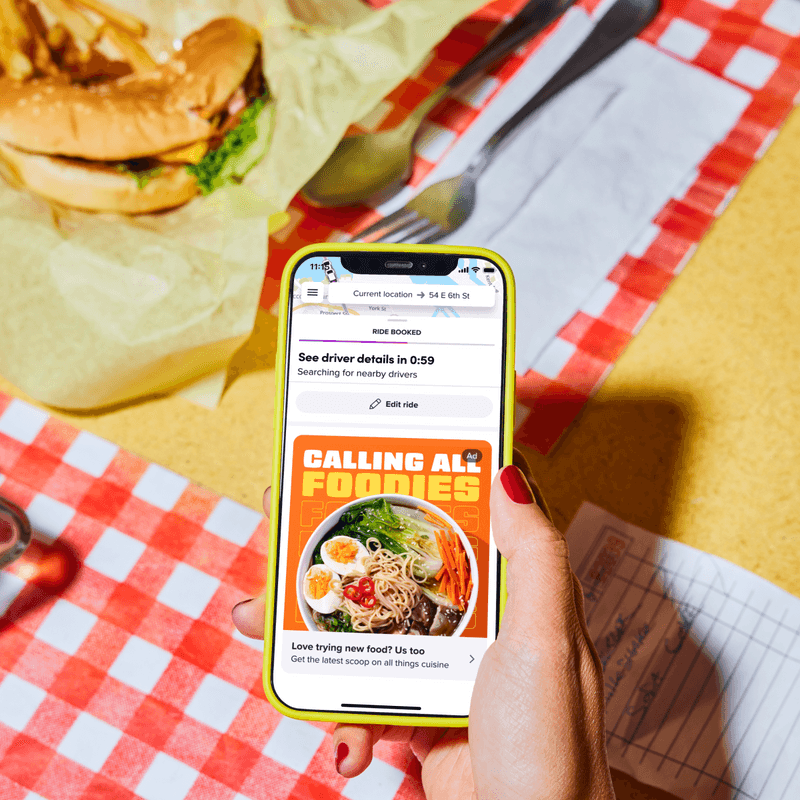
Image credit- Lyft
Currently, Lyft has 800 car top screens and over 6500 vehicles equipped with tablets. Additionally, it runs 3,250 bike stations around the New York, Chicago, and San Francisco metropolitans, majority of which have ad displays. According to Lyft, these advertisements will show up on users’ ETA screens once they connect with a driver and continue during their trip. Additionally, it will play adverts on the in-car tablet that drivers can use to increase their income through advertising and tips. It is still unclear, though, what portion of the ad revenue will go to drivers. Brands will be able to advertise in 12 markets during the initial launch, five markets on digital car screens, and four markets on bike share panels.
Read More: Vistar Media and Ten Square Collaborate for Immersive DOOH
The advertising canvas
Lyft plans to display its ads on its different digital units.
Lyft Halo
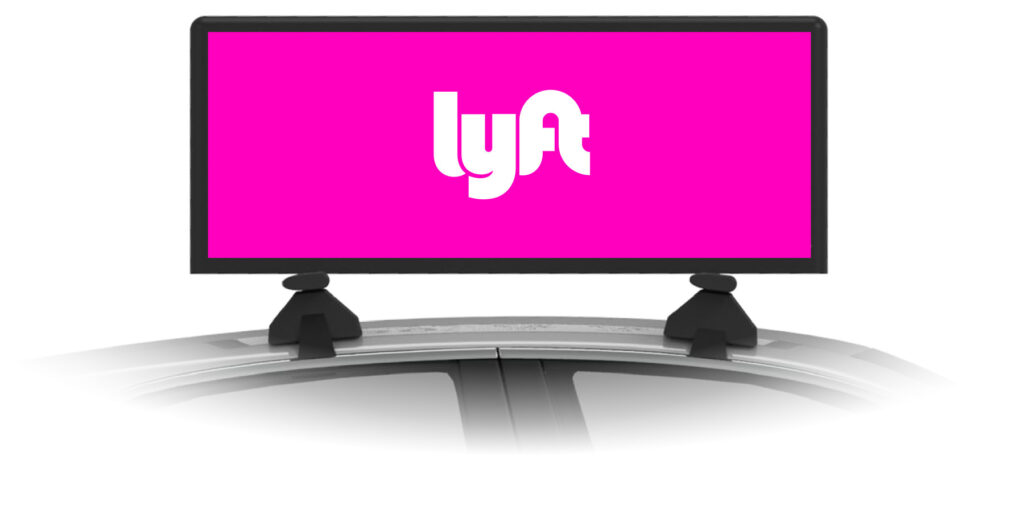
Image credit- Lyft
The Lyft Halo is a smart digital rooftop panel. Based on the car location, it can be incredibly efficient at grabbing viewers’ attention with interesting videos. Brands and advertisers will be able to reach large audiences at locations and times that are most beneficial. Through Lyft’s crediting partners, they will be able to monitor the effectiveness of the campaigns as well. Lyft Halo will make it possible to target and measure OOH advertising campaigns to a previously unheard-of.
Lyft tablets
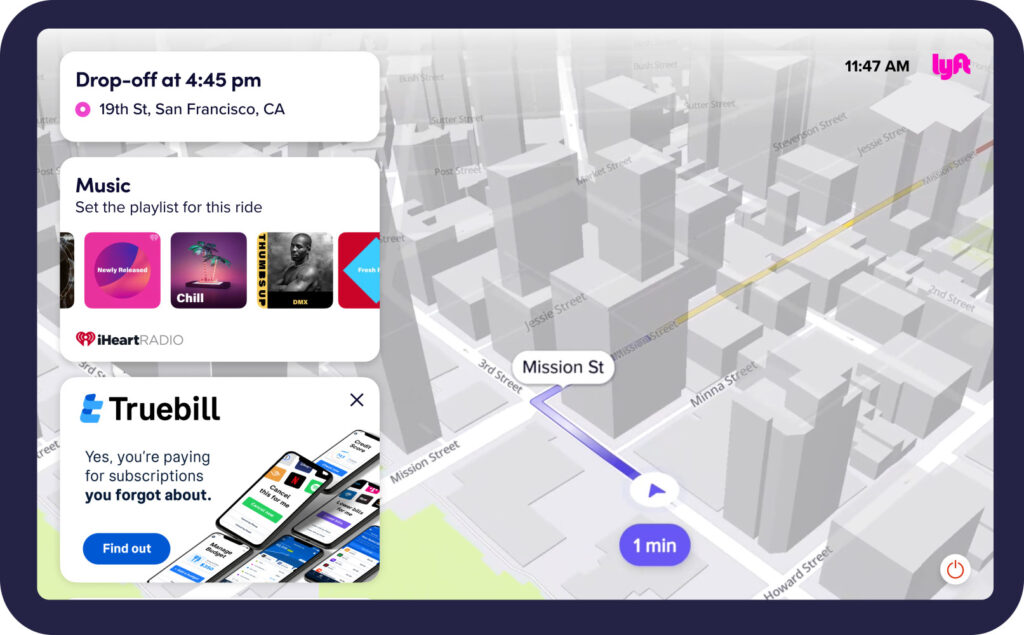
Image credit- Lyft
The rideshare experience will smoothly connect with these in-car tablets. Through its connection with iHeartRadio, it will allow users to follow their journey, critique, and reward drivers, and choose music during the ride. For the duration of the rideshare, brands will be able to deliver dynamic material to a highly engaged audience. Expansion into Los Angeles, Chicago, San Francisco, and Washington, D.C. are the future goals. Additionally, it intends for 25% of all rides on the Lyft platform in these areas to include tablets.
Lyft Bikes
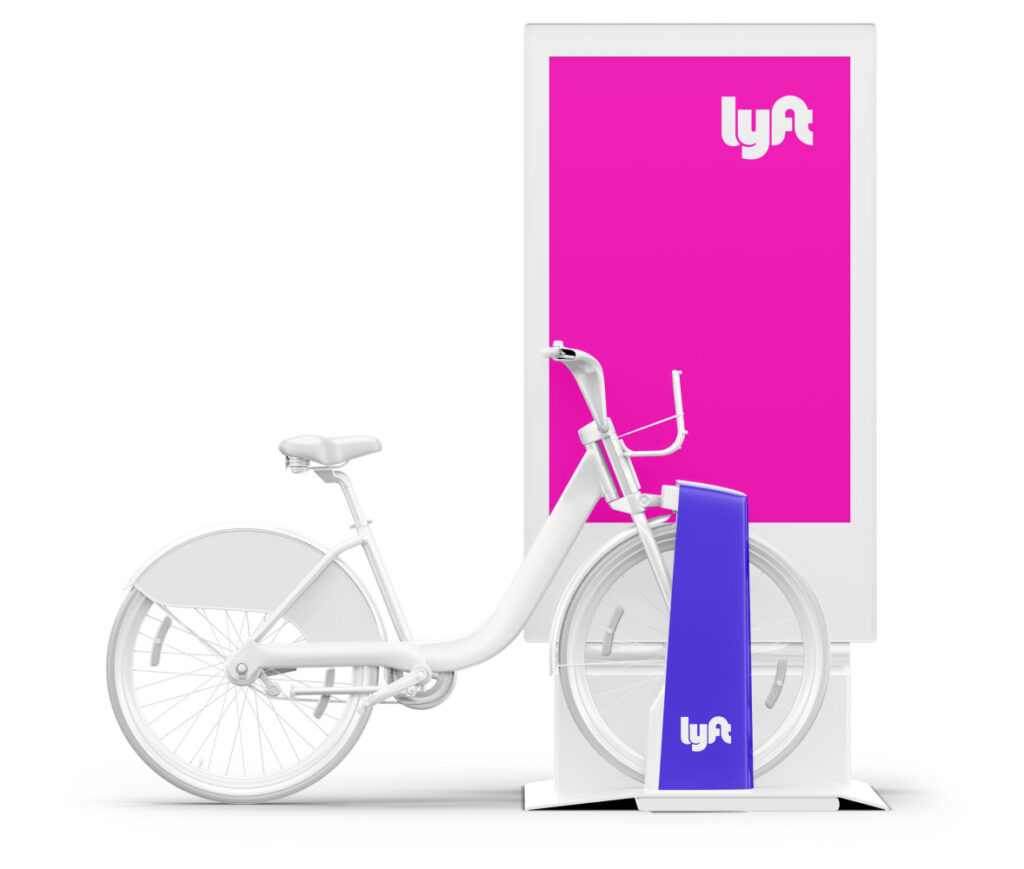
Image credit- Lyft
With more than 3000+ stations, 35,000+ bikes, and 36 million rides each year, Lyft Bikes runs the nation’s largest bike-share network. Its bike-share stations located throughout the cities offer amazing street-level media possibilities at busy intersections. Additionally, Lyft will upgrade the stations to add digital advertisements.
Lyft Skins
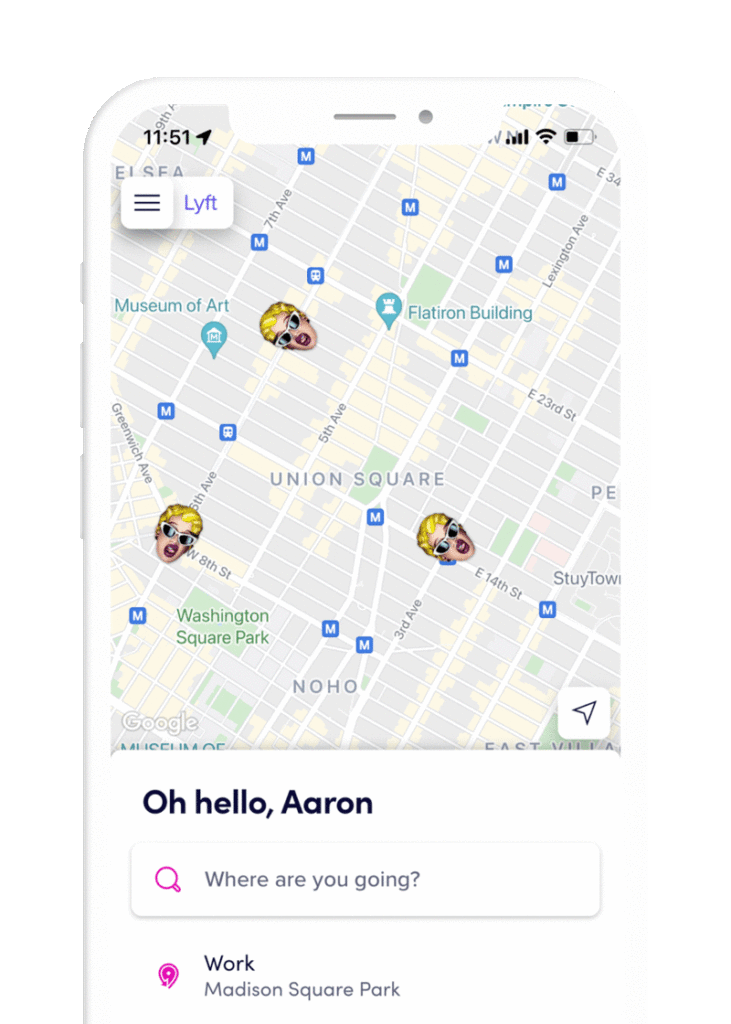
Image credit- Lyft
Advertisers will be able to interact with rideshare consumers on the Lyft App thanks to this innovative method. With a customizable brand symbol and banner, brands will have access to over 20 million active riders. They have collaborated with numerous marketers throughout their portfolio, including DoorDash, Starbucks, Marriott, etc.
Why the step?
Lyft made this decision in light of its ad income increasing significantly and beyond analyst projections. Lyft entering the advertising space was therefore inevitable. It has teamed up with ad tech firm Rokt to sell adverts. Additionally, it has a partnership with measurement company Kantar that enables clients to track ad expenditures. To give customers KPIs, it will also help measure the success of elements like brand recognition and buying intent. It is also developing an in-house advertising technology system.
At first, the same brands will be featured in every advertisement the rider sees while traveling. However, Lyft intends to gradually integrate several brands to purchase advertisements for various parts of the journey. The move also comes a month after its rival, Uber, introduced in-app advertisements. In contrast, Uber offers deliveries and freight brokerage and has a more developed advertising company. Additionally, the business just finished a strong quarter with over $650 million in advertising sales.
Lyft believes that to broaden its portfolio as much as possible, it is crucial to take risks and test out different ad styles. This is so that the financial situation is not disturbed by excessive reliance on one platform or channel. However, customers could still become irritated if repeatedly bombarded with advertisements. Therefore, finding the ideal balance between these two is crucial for Lyft and its advertising. The privacy issues with targeted advertising may discourage advertisers from contacting Lyft. As the business makes its debut in the advertising industry, there will be a long road ahead.
Read More: Lemma and Maxamtech partner to offer real-world DOOH clients Metaverse Billboards
Google Unveils Fresh Consent Management Rules for EEA and UK
EEA and UK advertisers and developers who use Google AdSense, Ad Manager, or AdMob for ad serving will need to use the new consent management platforms (CMPs) starting next year. The Transparency and Consent Framework (TCF) of IAB Europe (the Interactive Advertising Bureau) has been incorporated into this platform and received Google certification. Google is always searching for ways to improve consent experiences in order to meet consumer needs and statutory measures. This demonstrates their commitment to transparency and control.
CMPs consent requirements
For CMPs collaborating with its partners who use display ads in the EEA and the UK, Google has implemented a novel rule. Ad Manager and AdMob partners have until January 16, 2024, to adopt the CMP adjustments. Google-approved CMPs evaluate against Google’s certification requirements focusing on TCF compliance. Publishers who fail to comply will face restrictions from delivering ads to EEA and UK audiences. The rule also covers the use of AdSense, Ad Manager, or AdMob. When serving ads, they will have to connect the verified CMP to the TCF.
Google has also stated that traffic from Google-certified CMP will continue to qualify for limited, personalized, and non-personalized (NPA) advertisements. Google will seek authorization for both on-platform and off-platform reconciliation. They further indicated that CTV inventory is not currently subject to CMP regulations.
CMPs that collaborate with its publishing partners. It will keep trying to certify them in accordance with the certification standard. Google thinks the advertising sector can develop a more consistent and trustworthy system for disclosure and consent by embracing IAB Europe’s uniform framework. Additionally, these activities will promote a more security-conscious digital advertising environment and the current advancements in user privacy.
The Transparency & Consent Framework (TCF).
The IAB’s TCF v2.2 is becoming a crucial component in supporting the industry participants, including Google, which is currently restructuring its framework to align with this. It has significantly altered Europe’s data privacy landscape. The TCF is a tool for transparency that depends on standardization. It makes it easier to comply with GDPR and the ePrivacy Directive’s specific requirements. It applies applicable concepts and requirements drawn from EU-level guidelines from the EDPB and national-level guidelines from Data Protection Authorities, to the unique situation of the online industry.
The TCF is an industry-wide voluntary norm placed on technology partners that support the distribution, personalization, or evaluation of advertising and content (third parties or vendors). It aims to assist them to collaborate with publishers of apps and websites (first parties) to offer users a standardized experience when they make privacy choices.
Users have the option to give or withdraw consent as well as exercise their “right to refuse” the processing of personal data through TCF. It contains basic practical standards for educating users, giving them privacy choices, and respecting those choices that are derived from guidelines of Data Protection bodies and the law.
Read More: Antitrust Complaint Filed Against Google in the EU!
What is the EU user consent policy?
According to this policy, advertisers must ensure specific disclaimers and consents are received from end users in the EEA and the UK. This will be done in case they choose to include or use any of the Google products that implement the policy. In the event of non-compliance, usage of Google products may be restricted or suspended, and the agreement may be terminated. The publishers must legally get the end users’ authorization before collecting, distributing, and using personal data for individual advertising. It is also crucial to keep track of the end users’ consent and give them explicit information on how to withdraw their consent.
A quick look at personalized and non-personalized ads
Personalized ads
Previously called interest-based advertising, it is a robust technique that enhances advertising authenticity for users while increasing ROI for advertisers. They enhance both the user and advertiser experience by enabling advertisers to focus their campaigns on user interests. Personalized ads are ads chosen for display based on previously gathered or past data. The user’s past search queries, actions, visits to websites or apps, interests, remarketing, etc are all included in this.
Non-personalized ads
These adverts do not predicate on previous user activity. They focus on users based on relevant data, like basic geo-targeting, the user’s location, web or mobile content, and keywords. NPA uses cookies or mobile ad identifiers for frequency capping, aggregated ad reporting, and contest ad fraud and abuse. One must get consent before using cookies or mobile ad tags as per the ePrivacy Directive in some EEA countries. NPAs will only be provided to users who have signed in with Google in the EEA and shared their age under-age consent set by GDPR.
Read More: Meta Adopts Consent Policy for Targeted Ads Data in Europe
Vistar Media and Ten Square Collaborate for Immersive DOOH
Vistar Media has named Ten Square of Singapore as their SSP partner for programmatic DOOH engagements. Vistar Media is the world’s top provider of programmatic software and digital signage, and Ten Square is Singapore’s largest outdoor LED display. Marketers in Southeast Asia who are linked to Vistar Media’s SSP will receive access to Ten Square’s 3D anamorphic screen as a result of this groundbreaking alliance.
A One-Of-It-Kind Canvas
Ten Square is located in Singapore’s buzzing CBD, on the face of the renowned one-stop automobile vending machine. The 305 sqm. digital banner features high-resolution visuals with a pixel pitch of 10mm and over 2 million pixels. Translucent balloons with LED lights offer an extra lighting effect on both sides of the building. The screen can display 3D anamorphic content on three sides. It is a landmark structure in Singapore that provides onlookers with a comprehensive and captivating experience.

Image credit- Vistar Media
The screen is in a busy shopping center and acts as a stage venue for brand activations. Such peak positioning increases exposure and draws attention to the structure. Vistar Media believes that by working together, advertisers will be able to genuinely tap into the upcoming age of programmatic out-of-home advertising. It will also enable advertisers to unleash their vast creative potential via the medium. All eyes will move to Singapore as the world witnesses this unique canvas being used for innovative advertising campaigns.
Read More: All You Need To Know About The Rise Of DOOH Advertising
And what they said
Ben Baker, Managing Director, APAC at Vistar Media stated in the announcement,
As we double down on our investment in programmatic DOOH across Southeast Asia, I’m excited to forge such a strong partnership with Ten Square bringing advertisers one of the most unique out-of-home formats in Singapore for their advertising efforts. Partnerships like these are crucial to our efforts at Vistar to accelerate the overall adoption of pDOOH and I’m confident this will help advertisers continue to recognize the unique value the channel can bring to an omnichannel media mix.
Gary Hong, Founder of Ten Square said,
We are thrilled to partner with Vistar Media to help brands execute iconic pDOOH campaigns across our standout, “state of the art” screen that sits on the façade of the eye-catching car vending machine. With these innovations, we hope to elevate creatives and branding to new heights, captivating audiences even in the darkest of nights through our mesmerizing 3D anamorphic “ready” billboard. The seamless fusion of technology and artistry empowers brands to make a deep and lasting impression on passersby.
Read More: Vistar Media and Broadsign Partners To Optimize Programmatic DOOH Transactions
Loop Media-Microsoft Advertising Forge New CTV OOH Inventory Category
Microsoft Advertising and Loop Media, a provider of free ad-supported TV content, have teamed together to develop a new advertising inventory for SSP collaboration. Loop Media is a provider of digital video content with over 2 billion video views every month via eateries, shops, workplaces, medical facilities, airports, clubs, and colleges. In a pioneering arrangement in the SSP format, Loop Media and Microsoft Advertising will give marketers and demand-side platforms (DSPs) fresh distribution segments from which they may access and obtain Loop Media’s promotional engagements. Digital Out of Home (DOOH) and CTV (Connected TV) are the company’s key offerings on DSPs and SSPs (supply-side platforms). All prospective buyers of DOOH marketing will have access to Loop Media through the new category CTV Out of Home that was created as a result of this agreement. Buyers wanting to investigate ads on CTV OOH service networks will be among them.
Advertisers Rejoice
Through this strategic partnership with Loop Media, Microsoft Advertising seeks to grow its advertising business. It aims to give its advertisers access to the exposure and reach of Loop Media. This cooperation will also open up fresh options for marketers to efficiently and effectively interact with their target audiences.
Advertisers will have access to cutting-edge tools with the development of this brand-new sort of advertising inventory, the CTV OOH. They will be able to effectively connect with and interact with the demographics they want. The collaboration benefits both businesses and will increase Loop Media’s visibility in the constantly changing market.
Loop Media and Microsoft Advertising have paved a revolutionary ad landscape. The launch of CTV OOH under the aegis of the SSP partnership helps advertisers to precisely accomplish their marketing objectives. It has paved the way for a promising future by increasing market potential and improving client outreach with this agreement. Loop Media and Microsoft Advertising have created a game-changing advertising landscape by working together. The roll-out of CTV OOH under the SSP partnership framework gives marketers more freedom to precisely accomplish their marketing goals.
Read More: Connected TV Explained: The Essential Glossary Of CTV
And what they said
Bob Gruters, Chief Revenue Officer for Loop Media stated,
With this new category, Loop Media may be seen and purchased by an expanded group of advertisers in the marketplace. My team and I have been working diligently to get Loop Media positioned well across all revenue advertising categories including Microsoft Advertising’s CTV Out of Home category.
Erik Zamkoff, Microsoft Advertising associate director of Marketplace Development said,
We are pleased to launch our new CTV-OOH library on the Microsoft Advertising platform which provides a path for clients to buy CTV-OOH supply in the proper context with clear labeling in our new venue category packages. We are thrilled to feature Loop CTV-OOH supply in our new venue category packages.
About Loop Media
Loop Media, INC. is a market leader in digital out-of-home (DOOH), television, and digital signage. Through its Loop TV Service, it assists businesses in optimizing campaigns on various platforms by offering free music videos, news, sports, and entertainment channels. Loop Media has a license to stream music videos to companies in the United States using its patented Loop Player. Millions of users access its digital content at DOOH locations every day across the U.S. They include office buildings, retail enterprises, bars/restaurants, university campuses, TV platforms, airports, and local gas stations. It is the most comprehensive and important inventory of short-form entertainment.
Read More: Disney+ Hotstar Amp Brand Outreach With CTV Targeting
LiveRamp – Pinterest Team Up For Enhanced Global Integration
LiveRamp, a leading data collaboration platform, and Pinterest strengthened their partnership to give advertisers with improved global integration. Marketers will be able to target foreign consumers on Pinterest as a result of this collaboration. The alliance will make use of RampID, LiveRamp’s pseudonymous people-based identity.
LiveRamp and Pinterest primarily announced the arrangement earlier this year. According to the statement, it would use LiveRamp’s interoperable clean room technology as a shared area for marketers, publishers, merchants, and data owners to improve measurement without compromising data safety. The data cooperation tool provides marketers with a safe and secure platform to link certain first-party and Pinterest data in an encrypted environment.
How will Advertisers benefit?
Advertisers will benefit from improved measurement and analytics as a result of the Pinterest-LiveRamp integration. It will increase the number of options for brands to gain an advantage from first-party data. CPG buyers will use this partnership to reach their customers through retail media channels such as Carrefour and Albertsons. Marketers will gain from the integration since it will provide high-performance results, ROI, and perceptual insights.
Advertisers are emphasizing cookie-free marketing ahead of the 2024 deadline to eliminate third-party cookies from Chrome due to continued privacy concerns. This collaboration will provide them with LiveRamp’s 100% cookie-free implementation with Pinterest. Furthermore, it enables people-focused marketing, in which marketers do not have to give up control over consumers’ private data or disclose information beyond their business.
Why Pinterest?
Pinterest hosts more than 465 million users who visit the platform each month to get inspiration. It can be to discover products or services for their homes, holidays, etc. Advertisers aim to be discovered during each touchpoint of the planning stage. On Pinterest, advertisers can reach the right consumers and influence their decision by turning them into potential consumers for the brand.
Here’s what they said
Bill Watkins, Chief Revenue Officer at Pinterest said,
We’re excited to continue building on the momentum of our privacy-centric data collaboration and measurement partnerships with LiveRamp. We’re now enabling even more marketers around the world to activate on Pinterest without compromising on control or privacy. Global marketers can build better campaigns with LiveRamp and Pinterest today. They can also build campaigns with the confidence that this partnership is sustainable beyond third-party cookie deprecation and other ecosystem shifts.
Travis Clinger, SVP of Activations & Addressability, LiveRamp said,
In this evolving macroeconomic climate, every dollar marketers spend must be addressable and measurable, and we’re excited to offer marketers across the world the ability to seamlessly leverage RampID for people-based marketing on Pinterest, enabling better campaigns and better measurement. By building on identity that can power better data collaboration in the future, marketers can begin building enduring brand and business value.
Read More: Petal Ads Announces Partnership With MMP WorldWide
Mondelez international returns to X with brand safety committment
The first company to stop running advertisements on Twitter, now X which Elon Musk acquired, was Mondelez International, the company that makes the well-known Oreo cookies. Since then, X has been working nonstop for 9 months to provide an environment that is focused on creativity, exciting, and beneficial for advertisers. Thus, Mondelez made the decision to come back to the platform in May. The text-based platform strives to strike a balance between the right to free speech and platform security in order to entice brands to participate voluntarily in the debate.
The social media platform is extending its industry-leading collaborations and capabilities of Adjacency Controls to help all marketers achieve their unique sustainability needs in a more ascended and automated means. These new capabilities will work together to unlock an expanded level of adjacency protection for advertisers on X.
X has modified its brand safety features in response to worries about dwindling ad revenue. The platform is extending its current partnership with Integral Ad Science (IAS), an ad verification business, to provide US advertisers with “premium, vetted inventory.” Brands may now optimize their ads on X, and it wants to expand these solutions internationally. The platform is confident that these solutions will give marketers the assurance that their advertisements will run alongside relevant content and adhere to GARM standards.
Jon Halvorson, SVP of consumer experiences at Mondelez International, said in a statement,
X has made tremendous progress in building brand safety tools that empower advertisers to leverage the power of their platform while curating the context in which the ads appear. Adding pre-bid meets a critical commitment made by their leadership and we are eager to implement this new feature going forward.
WHY MONDELEZ PULLED OUT FROM TWITTER?
Mondelez International, the parent company for Cadbury and Milka chocolates had pulled out its ads from Twitter last year, just after Elon Musk had acquired. Reuters had reported that CEO Dirk Van de Put had said, “What we’ve seen recently since the change on Twitter has been announced, is the amount of hate speech increase significantly. We felt there is a risk our advertising would appear next to the wrong messages.”
The CEO made his comment as the acquisition phase was in a state of upheaval, with large layoffs and advertisers cutting back on spending prompting questions about content moderation. Apart from Mondelez, other businesses that have also removed their advertisements from the site included Audi, Pfizer, General Mills, and United Airlines.
Read More: Integral Ad Science Expands Brand Safety Partnership With TikTok
X’s BRAND SAFETY UPDATES
For a long time, advertisers had expressed worries about brand safety and content management on X. X created a pre-bid adjacency for marketers to overcome these problems. Since then, more than 1,900 international advertisers have tried the technology, which has a 99% efficacy rate for avoiding the proximity of dangerous information. Coca-Cola, Visa, Marriott, Mondelez, Taco Bell, Expedia, Amazon, and Applebee are a few of these brands.
Sensitivity Setting, a system that enables advertisers to coordinate their brand messaging with content was also introduced, according to X. The goal will be to bridge the delicate balance between accessibility and relevance and satisfy the brand’s sensitivity needs. Currently, the tool has two settings levels: Standard and Conservative. While the latter is for brands with rigorous sensitive limits, the former is for brands with a moderate sensitive threshold.
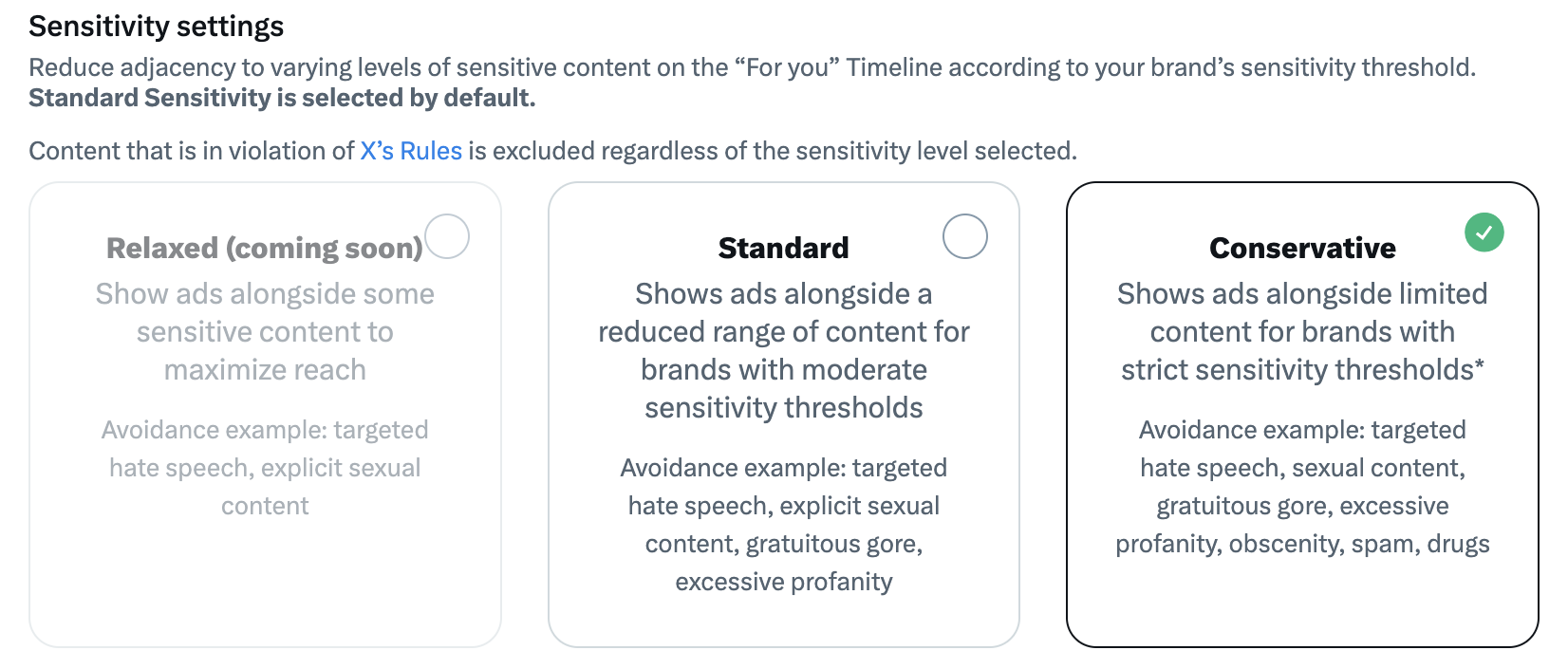
Image credit- X
For any campaign, Sensitivity Settings will use machine learning to modify the adjacency to various degrees of material in accordance with a brand’s sensitivity level. Brands are free to choose the setting they feel would best serve their unique campaign objectives. The automatic industry-standard blocklist that X is developing attempts to shield advertising from showing up next to dangerous phrases in the Home Timeline.
The platform has made significant strides in terms of brand safety and appropriateness because of X’s ongoing efforts to develop novel solutions. It pledges to give advertisers more power and accountability. It also claims to continuously construct new marketing capabilities. Its commitment to brand safety underlines the company’s dedication to fostering a responsible and secure advertising ecosystem, setting a positive precedent for industry standards.
Read more: Twitter Ad Revenues Plummet 59%, Record Negative Cash Flows
Zoom Faces Backlash As Revised AI Policy Raise Privacy Issues
Zoom, the video conferencing company that emerged in 2020 during the Covid epidemic, is receiving harsh criticism for its revised terms and practices. Following two changes to its AI approach, the corporation has announced that it will develop AI-powered tools using client information without user approval. Zoom claims complete authority over data collected during Zoom calls under the amended AI policy terms. Furthermore, they can reuse and share this data in any way they wish while adhering to the law to develop their artificial intelligence/machine learning frameworks. By doing so, they have failed to give users the choice to opt out.
As part of our commitment to transparency and user control, we are providing clarity on our approach to two essential aspects of our services: Zoom’s AI features and customer content sharing for product improvement purposes. Our goal is to enable Zoom account owners and…
— Zoom (@Zoom) August 7, 2023
Updated TOS with AI policy
Zoom revised its service terms in July. These policy revisions follow a public uproar over ethical implications of developing AI models with consumer data. According to the TOS, Zoom may collect and use “service-generated data” on product usage, telemetry, and inspections to train AI models. Customers agree to allow Zoom to access, utilize, gather, create, change, distribute, process, manage, and keep service-related data for any reason, including ML or AI training and algorithm tuning, without attribution. The TOS statement, on the other hand, fails to explain or clarify what Zoom means by service-generated data.

Image credit- Zoom
Read More: The AI Search War: Microsoft & Google Compete for Search Engine Leadership
Furthermore, according to revised policies, Zoom has obtained a long-term and global license that allows them to freely share, issue, access, utilize, stock, pass on, evaluate disclose, protect, extract, change, replicate, share, exhibit, distribute, translate, record, generate fresh versions, and manage customer content. A non-exclusive and royalty-free license allows sublicenses and transfers.

Image credit- Zoom
Zoom Responds
People express concerns about openness and privacy laws. Many people are concerned that Zoom’s updated restrictions may have significant ramifications in the telehealth and educational industries. These industries are governed by privacy laws. They also believe that it is critical to address AI model training issues using data gathered from recorded sessions.
Meanwhile, it denies using user information for AI training without first obtaining authorization. According to a blog post by Zoom, clause 10.2 is merely to enhance openness around data usage, to improve customer experience. This would entail studying usage trends such as peak hours in specific time zones to optimize the data center. This would improve video quality. Although Zoom has stated that it will not use audio, video, or chat content for training its models in the healthcare and educational sectors without client authorization, its terms of service appear inconsistent.
Smita Hashim, Chief Product Officer for Zoom writes,
An example of a machine learning service for which we need license and usage rights is our automated scanning of webinar invites/reminders to make sure that we aren’t unwittingly being used to spam or defraud participants. The customer owns the underlying webinar invite, and we are licensed to provide the service on top of that content. For AI, we do not use audio, video, or chat content for training our models without customer consent.
Read More: Battle of the Ads: Borzo Reveals Who Wins – Advertising Team or AI?
Zoom’s AI-powered assistant Zoom IQ contradicts TOS
A few months ago, Zoom introduced Zoom IQ, an AI-based assistant. This function, which summarizes conversation threads and produces automated answers to chat queries, is optional. However, Zoom IQ is automatically enabled. Users who do not change their settings give businesses permission to collect their data.
The other participants in the call receive a notice stating “Meeting Summary has been enabled” when a Zoom meeting starts with Zoom IQ enabled. Inputs and AI-generated content can be accessed from all users by the account holder. The company ties this to model training and product improvement. The participants have two options: accept the meeting or quit it. It is impossible to avoid sharing private information. In other words, someone else can give Zoom permission to use your data to create AI on your behalf.
A look at the future
Zoom, whose popularity surged during the Covid-19 outbreak, has received criticism for its privacy practices in the past. The business was hit with a $85 million lawsuit the year before due to a security flaw that let hackers access unidentified virtual meeting rooms. Making adjustments to its policies to remain relevant is unavoidable given the constantly changing AI landscape. In addition to OpenAI’s ChatGPT and Google’s BARD chatbot, other AI platforms have raised similar concerns. The results of Zoom’s recent changes to its terms and rules are uncertain. Will it further damage its well-established reputation or turn out well?
Read More: FTC Issues Notice to OpenAI over ChatGPT’s Privacy Data Breach
Illumin Boosts DOOH Journey Ad Platform with Broadsign Alliance
Broadsign, a leader in digital out-of-home (DOOH) advertising, and Illumin, a digital advertising company, have teamed up to transform the industry. The collaboration will offer an extensive and cohesive cross-channel marketing solution. Broadsign wants to incorporate Illumin’s journey advertising solution into its supply-side platform. The partnership will provide advertisers with a connected and user-friendly canvas.
This agreement will give Illumin access to international DOOH inventory and serve as a cross-channel marketing resource. In the era of full-funnel strategies, the decision was timely. Broadsign’s SSP platform’s commerce, roadside, and other DOOH advertising formats will now be available to agencies and brands operating in 15 countries. These cross-platform campaigns will include TV, display, native, video, and CTV advertisements.
User interfaces will be easier to streamline the audience-targeting process by merging technologies. They will be able to target potential customers from brand recognition to brand evaluation at every stage of the funnel. These cutting-edge features will ease the process of reaching their target audiences.
And that’s what they said
Andrey Feldman, Vice President of Products at illumin shared,
DOOH has grown to become a critical part of journey marketing, so as we continue to look to the future, expanding our platform to include this important facet of programmatic advertising is crucial. The ability to plan, optimize, and measure in one place is unique to illumin, and when it comes to adding DOOH to our platform, we want to partner with the best, making Broadsign an obvious choice. It’s a testament to our continued commitment to help redefine the industry’s cross-channel journey.
John Dolan, VP, Global Head of Media Sales and Services of Broadsign stated,
Exceeding marketer objectives requires a broad but focused approach, making cross-channel advertising with DOOH a smart strategy. We’re excited to team up with illumin to bring this unique channel and all it has to offer to its media buyer base.
About Illumin
With headquarters in Toronto, Canada, Illumin facilitates advertising at every stage of the consumer journey. Live data analysis and sophisticated machine learning algorithms are used by the organization. It uses the potential of information-driven journey advertising to illuminate companies’ interactions with consumers. They host customers from Europe, Latin America, and North America.
About Broadsign
Publishers, agencies, and brands can interact with audiences around the world by using out-of-home advertising thanks to Broadsign. Throughout the customer journey, the business communicates with audiences through a variety of touchpoints. Over a million static and digital signs are powered by it, including roads, airports, shopping centers, retail locations, medical facilities, transport systems, and more. The technology facilitates easier access to premium displays for marketers and agencies to execute productive programmatic DOOH campaigns. Pepsi, Turkish Airlines, The UFC, Volkswagen, John Lewis, Samsung, and many more are among its clients.
Read More: Vistar Media and Broadsign Partners To Optimize Programmatic DOOH Transactions
WPP and Spotify Form A Unique Revolutionary Partnership
WPP and Spotify, the worldwide streaming platform, have formed an unparalleled collaboration. This multi-year agreement will provide WPP customers with priority access to Spotify’s ad solutions and first-party intelligence. Spotify is the sole audio streaming platform to be integrated directly into WPP’s product offering as a result of the partnership. The collaboration will concentrate on information, perceptions, creativity, technology, programmatic strategies, and forecasting market growth. The agreement will also add significant value to WPP and its customers by using information about the relationship between music and audience views and behaviors.
WPP’s Choreograph technology will be used in conjunction with Spotify’s first-party data analytics to help clients analyze average listening behaviors. This will help customers develop effective and innovative digital audio marketing campaigns. The partnership will also focus on offering market-leading approaches and training WPP’s team and clients in digital audio creative and Spotify ad solutions. Furthermore, they will have early access to Spotify’s Neuro insights research.
Music Listeners – The Most Active Engagers
Tempo and passion are musical characteristics that help estimate human temperament. This enables advertisers to recognize their audiences emotionally. Spotify collaborated with Neuro Insights to reproduce Sonic Science Volume 1. This time, they used audio commercials from WPP clients to learn about connection inducers, emotional power, memory recollection, and other topics.
The study discovered that as music streamers switched from music or podcasts to WPP customers’ audio commercials, their ad interaction increased by 17%. Furthermore, Spotify consistently drove better responses than any other media source. Furthermore, it was discovered that ad engagement was at a record high regardless of what users listened to. Campaign development and improved client targeting have become more efficient due to the WPP-Spotify relationship. These insights have enabled WPP and its clients to reach previously untapped Millennials and Gen Z customers.
Stepping Stone for Spotify
Spotify’s second-quarter performance fell short of expectations. The audio streaming platform attributed the decline to market factors. Nonetheless, it continues to add registered users steadily. Spotify may benefit from increased ad earnings due to the collaboration. This cooperation aims to improve customer data collection. WPP intends to eliminate third-party cookies from the platform next year, and that’s why they leverage customer data.
Spotify has a high level of ad engagement among its podcast and music ecosystem listeners. Every day, over 550 million people from 184 different countries listen to audio content on Spotify for an average of two and a half hours. WPP will benefit from Spotify’s massive customer data thanks to this agreement.
What will WPP reap from this alliance?
WPP will gain from this partnership in many ways. Here are some examples.
- First mover advantage in accessing Spotify’s mood data using Wunderman’s Zipline™ Data Management platform. WPP and its customers can improve targeting choices across platforms by connecting their own data with Spotify’s insights into user emotions, listening behaviors, location, etc.
- Unparalleled access to Spotify insights into connected device activity. This is aided by identifying and delivering the correct message to the right audience at the right time.
- Launch partners for AppNexus’ audio programmatic marketing tool
- Spotify’s primary launch partners in specific emerging markets
- Access to beta testing and exposure on Spotify’s product map
Executive Statements
Stephan Pretorius, Chief Technology Officer of WPP, said
In the fast-evolving media and entertainment landscape, audio streaming has become an integral part of everyday life. At WPP, we recognise the power of audio as a critical component of marketing.
Brian Berner, Global Head of Advertising Sales, at Spotify, said
We’ve long partnered with WPP to enable agency planners and buyers to make more informed decisions when planning for digital audio. With our new global partnership, we’re helping WPP clients modernise their strategy and planning. As we continue to drive innovation in audio and the advertising industry at large, partners like WPP are critical to delivering for advertisers, creators and audiences wherever they are.
Read More: Spotify Rolls Out Clickable CTA Cards for Podcasts

